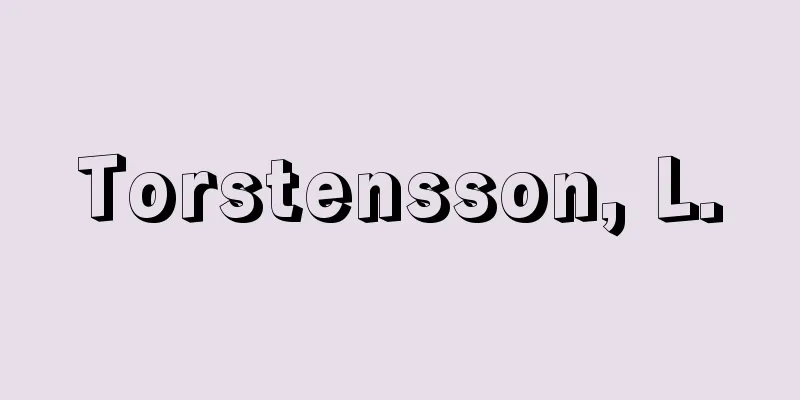Counter-revolution

|
It refers to movements or forces opposed to the revolution, or the restoration of the old regime by such movements or forces. The term counter-revolution is said to have been first used by Danton in 1790, in the midst of the French Revolution. In 1792, in the charges against Louis XVI presented to the National Convention, it was mentioned that the king "had caused special associations in Paris to carry out various activities useful to his counter-revolutionary plans," and in a Jacobin circular in 1793 it was stated that "the counter-revolutionaries were in the government, in the National Convention," and thereafter became established as a political term. The terms reaction and reactionaries are said to have appeared a little later, in 1795 or 1796. Counter-revolutionary forces are roughly synonymous with the conservative reactionary faction among the radical, moderate, and conservative reactionary factions that appear during the revolution. In bourgeois democratic revolutions such as the French Revolution, the core members were the clergy, aristocrats, and bureaucrats under the former absolute monarchy. In the case of proletarian socialist revolutions such as the Russian Revolution, in addition to the reactionary bourgeoisie, the former aristocracy and landowners who had flourished under the Tsar's autocracy were also included. In addition to the former ruling class and their supporters remaining within the country, refugees from the revolutionary process and foreign ruling classes who feared the international spread of the revolution could also constitute counter-revolutionary forces. The civil war and intervention wars that followed the Russian October Revolution were a counter-revolutionary movement that combined these forces. Japan's intervention in Siberia was also part of this movement. There are two types of counterrevolution: "preventive counterrevolution," which suppresses and subdues revolutionary forces before they gain power, and "restorative counterrevolution," which seeks to restore the old system after revolutionary power has been acquired. The Metternich regime after the Congress of Vienna, Italian Fascism in the 20th century, and German Nazism are typical examples of "preventive counterrevolution," while examples of "restorative counterrevolution" include the restoration of Charles II after the English Puritan Revolution (1660), the restoration of the Bourbon dynasty after the French Revolution (1814), the military coup d'état linked to the United States against the Chilean People's Union government (1973), and the Timisoara massacre by the Ceausescu regime in Romania during the Eastern European revolution (1989). Since counter-revolution is the opposite of revolution, its success or failure is determined by the strength and stability of revolutionary power. The important conditions for counter-revolution are internal divisions within the revolutionary forces, the fragility of the social foundations of revolutionary power, and especially the failure of the radicals to exercise hegemony and leadership over the intermediate forces that form the moderate faction. From this point of view, the radical "excess" of the revolution and the implementation of a revolutionary program without considering the political consciousness and subjective maturity of the masses of the people also serve as triggers for counter-revolution. In addition, the internal maturity of the revolutionary process, that is, the extent to which the revolutionary forces were able to rally together the majority of the people under the old regime and exercise political and ideological hegemony over the military, police, and civil servants within the state apparatus, determines the ability to resist counter-revolution, especially when it is linked to the interference of foreign ruling classes. In the revolutionary process, it is inevitable that the influence of counter-revolutionary forces will flow into the revolutionary forces, but to mistake dissenters and opponents within the revolutionary forces for counter-revolutionary forces and to label them as "agents and spies of the counter-revolution" is a suicidal act for the revolution. In the real political process, however, it is possible that internal opponents will turn into counter-revolutionaries. The 20th century counter-revolution generally had a strong "preventive counter-revolution" character, and sometimes appeared in the form of a "pseudo-revolution" like Nazism. The role of mass ideological propaganda and information manipulation has also increased. [Tetsuro Kato] [Reference] |Source: Shogakukan Encyclopedia Nipponica About Encyclopedia Nipponica Information | Legend |
|
革命に反対する運動・勢力、ないしこの運動・勢力による旧体制の復活のこと。反革命ということばは、フランス大革命のさなか、1790年にダントンによって初めて使用されたといわれる。1792年、国民公会に提出されたルイ16世の起訴理由のなかで、王は「パリにおいて、特殊団体をして自らの反革命的計画に有用な種々の活動を遂行させた」と言及され、93年のジャコバン派回状にも「反革命派は、政府のなかに、国民公会のなかにいる」と用いられて、以後、政治用語として定着していった。反動・反動派ということばは、やや遅れて1795、96年に現れたという。 反革命勢力は、革命過程に現れる急進派・穏健派・保守反動派のうちの保守反動派とほぼ同義であり、フランス革命のようなブルジョア民主主義革命においては、旧絶対王政下の僧侶(そうりょ)・貴族・官僚層などが中心となる。ロシア革命のようなプロレタリア社会主義革命の場合には、反動的ブルジョアジーのほかに、ツァーリ専制下で栄華を極めた旧貴族・地主層も含まれていた。また、こうした国内に残存する旧支配階級とその支持者のほかに、革命過程での国外亡命者たち、革命の国際的波及を恐れる外国支配層も、反革命勢力を構成しうる。ロシア十月革命後の内戦・干渉戦争は、これら勢力の合体した反革命であった。日本のシベリア出兵もその一翼を形成した。 反革命には、革命勢力の台頭局面で事前にこれを弾圧・制圧する「予防的反革命」と、革命権力獲得後に旧体制を復活しようとする「復古的反革命」とがある。ウィーン会議後のメッテルニヒ体制や20世紀のイタリア・ファシズム、ドイツ・ナチズムは、「予防的反革命」の典型であり、「復古的反革命」の例としては、イギリス清教徒革命後のチャールズ2世の復活(1660)、フランス大革命後のブルボン王朝復活(1814)、チリ人民連合政府に対するアメリカと結び付いた軍部クーデター(1973)、東欧革命のなかでのルーマニア・チャウシェスク政権によるティミショアラの虐殺(1989)などがある。 反革命は革命の反対概念であるから、革命権力の強さと安定度に応じてその成功・不成功の帰趨(きすう)が決せられる。革命勢力の内部の分裂や革命権力の社会的基盤の脆弱(ぜいじゃく)性、とりわけ穏健派を形成する中間勢力への急進派のヘゲモニーと指導の失敗は、反革命の重要な条件となる。この見地からすれば、革命の急進的「行きすぎ」、国民大衆の政治意識や主体的成熟度を顧慮せずに行われる革命プログラムの実行も、反革命の誘因となる。また、革命過程の内発的成熟度、すなわち革命勢力が旧体制下でどれだけ国民的多数派を結集し国家諸装置内部の軍人・警察官・官吏にも政治的思想的ヘゲモニーを行使しえてきたかが、とりわけ外国支配層の干渉と結び付いた反革命に対する抵抗の能力を規定することになる。革命過程では革命勢力内部にも反革命勢力の影響が流入するのは不可避であるが、革命勢力内部の異論者・反対派と反革命勢力とを見誤り「反革命の手先・スパイ」とすることは革命の自殺行為となる。現実の政治過程では内部の反対派が反革命に転化することもありうるのではあるが。 20世紀の反革命は、一般に「予防的反革命」の性格が強く、ときにはナチズムのような「擬似革命」的相貌(そうぼう)で現れることもある。また大衆的イデオロギー宣伝と情報操作の役割が増大している。 [加藤哲郎] [参照項目] |出典 小学館 日本大百科全書(ニッポニカ)日本大百科全書(ニッポニカ)について 情報 | 凡例 |
<<: Crimes of Counter-Revolution
Recommend
Seleucus [I] - Seleucus
The first king of the Kingdom of Syria (reigned 30...
Phoinikes
…The origin of the word Canaanite in the Old Test...
Nikolay Nikolaevich Bogolyubov
Russian theoretical physicist. Born in Nizhniy No...
Mani (English spelling)
...A dualistic religion founded and advocated in ...
Linalool - Linalool (English spelling)
A type of alcohol that belongs to the chain monot...
antiquarian bookshop (English)
...the general term for businesses that buy and s...
Ohira Motoori
Year of death: Tempo 4.9.11 (1833.10.23) Year of b...
Declaration of Rights
…After King James II fled the country in December...
Imperial Letter - Migyosho
〘 noun 〙 ("mi" is a prefix) [一] A style ...
Product classification - Product classification
There are various ways to classify goods depending...
Plaza, L. (English spelling) PlazaL
…Alfaro implemented the separation of church and ...
Balbiani, EG (English spelling)
…A giant chromosome found in the interphase nucle...
Colorwa - Colorwa
…Unlike India, the Sinhalese caste system does no...
Addressed to a government office - Addressed to a government office
…From the mid-Heian to the Kamakura period, this ...
Functional Language
A language in which programs are constructed using...

![Johnston [island] - Johnston](/upload/images/67cbe4caa362e.webp)







